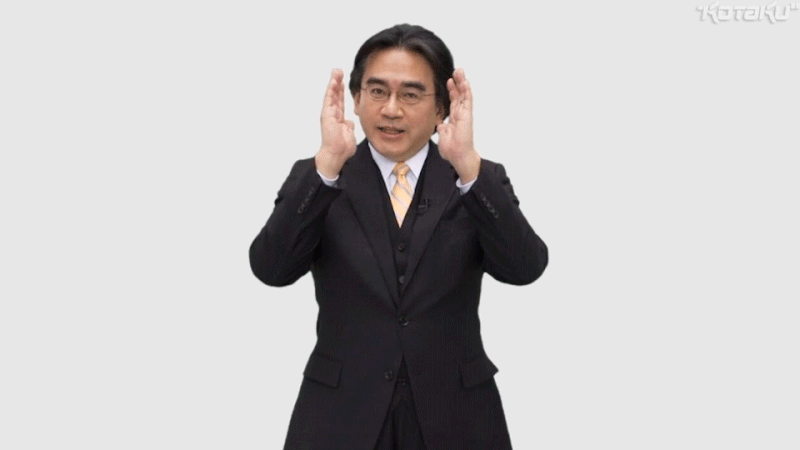When a Switch owner named Setery told a gaming forum about how NES Golf randomly appeared on her Switch’s screen, commenters accused her console of being haunted. Switch hackers’ subsequent race to unearth NES Golf now indicates that there’s a hidden game on the console and, actually, it appears to be a heartwarming tribute to the deceased Nintendo CEO Satoru Iwata.
Iwata was a Nintendo icon, a demigod in the gaming world after his face accompanied online Nintendo Direct press conferences for years. Prior to heading Nintendo, Iwata was a programmer, working on games like EarthBound, Pokemon and Super Smash Bros. The story goes that, after several developers turned down the task of developing the NES’s Golf, Iwata found a way to fit the game’s 18-hole course onto a cartridge’s modest memory.
On July 11th, 2015, Iwata succumbed to cancer at age 55. As Nintendo CEO, Iwata was known for his “Iwata Asks” column on Nintendo’s website and his appearances at major Nintendo events. Thanks to Nintendo Directs, he also became associated with a very specific gesture:

Fast forward to early summer, 2017, when hackers discovered a hidden NES emulator on the Switch referred to as “Flog,” Ars Technica reports. “We thought they had included it during manufacturing by mistake,” Plutoo, one of the Switch hackers who coordinated similar stunts over a private IRC, told me over Twitter direct messages. “But when we [dug] deeper, we found there was some suspicious code in the ‘Home Menu.’” Last weekend, bored, Plutoo decided to look into it. He says he discovered two intriguing details: “The code looked for the date July 11th, and the code right before seemed to enable the ‘Joycon sixaxis’ motion sensors.”
Apparently, the code was telling Pluuto that a Joy-Con-enabled “secret handshake,” in his words, unlocked something on July 11th on the Switch’s home screen. And the motion laid out in the code’s numbers, he said, appeared to match Iwata’s famous Nintendo Direct gesture. Pluuto and his co-conspirators knew that July 11th was the day Iwata passed away, and also that he programmed NES Golf back in the ‘80s. Also, obviously, that “Flog” is “golf” spelled backwards.
It's 1984 all over again… pic.twitter.com/PXBY2aCMcD
— Pixelpar (@pixelpar) September 18, 2017
Here’s the problem: The Switch knows what day it is. As long as the Switch has been connected to the internet and updated, users can’t seem to fool the system into thinking it’s the day that will trigger Golf to appear. An internet user going by Fiskerdin, who follows the Switch hacking scene and was familiar with the Golf rumors, happened to have an unboxed Switch lying around his house (he preferred his Blue/Red Joy-Cons to the Grey ones he pre-ordered). “I booted the unopened Switch up, did the setup procedure, and decided to try it out the gesture which was posted,” he explained over e-mail. “I simply put both Joy-cons parallel to each other and pointed towards the ground, then raised them in a vertical position and waited, the screen turned blank, an audible cue was played, and then I was greeted with the Golf menu.”

Several other Switch users have posted pictures of Golf’s home screen on their console. But while there are about half a dozen published images of this hidden tribute to Iwata, Nintendo has yet to confirm it and has not responded to multiple requests for comment. We also don’t know whether Golf will be available on July 11th, 2018.
That said, there is a very convincing video of someone getting Golf to work on a Switch:
Hearing about the memorial, Kotaku East reporter Brian Ashcraft pointed me to the the Japanese tradition of Omamori, which refers to “guide or protect.” Traditionally, they are talismans made of silk and paper left at shrines. Now, they’re made out of all sorts of things, like toys or memory cards, which could help protect digital security. They channel spirits who will help guide the Omomori-owner. It’s possible that somebody at Nintendo coded an NES emulator and Golf into the Switch—and every Switch—so Iwata’s spirit could shepherd the console to success. So, maybe Setery was right—it was a ghost.
